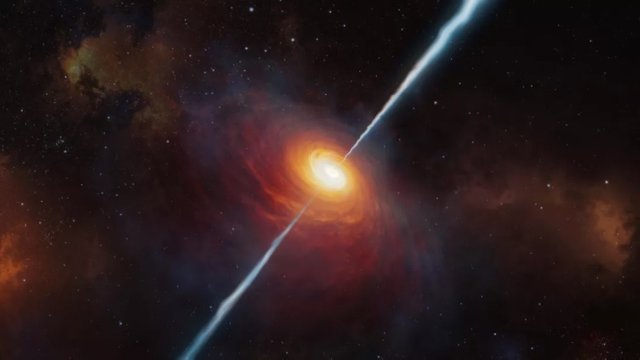
In a study published on Monday in The Astrophysical Journal, researchers described a supermassive black hole located a whopping 13 billion light years from Earth that emits super-high-speed-material (cosmic jets) on a scale never before seen.
CNET.com reports:
"Officially, the quasar is called PSO J172.3556+18.7734, but scientists have, fortunately, nicknamed it P172+18.
"This particular quasar is a record-breaker because of the cosmic jet, which blasts out perpendicular to the accretion disk. It’s only about 1,000 years old. Cosmic jets are super-high-speed material being blasted out of the galaxy’s center, and they throw off a ton of energy as radio waves when they interact with the galaxy’s gas. Astronomers class these types of quasars as “radio-loud” and believe the jets may help black holes grow and could play a role in how a galaxy forms and evolves."
Chris Carilli, an astronomer at the National Radio Astronomy Observatory, believes the discovery is monumental.
“Jets have a role in regulating star formation and the growth of their host galaxies,” noted Carilli. “So this discovery is valuable to understanding these processes in the early universe.”
Around 10% of known quasars have been known to be “radio-loud,” and since P172+18 is around 13 billion years away, it makes it the most distant ever found.
From CNET:
"P172+18 isn’t the most distant quasar ever found, however. That record belongs to J0313-1806, which houses the oldest supermassive black hole scientists have yet discovered and resides about 13.03 billion light-years from Earth. That was discovered by the Atacama Large Millimeter/submillimeter Array, which is particularly adept at spotting very ancient, very distant cosmic phenomena. When NASA’s next-generation James Webb Space Telescope launches later in the year, it too should help probe the early universe even more."